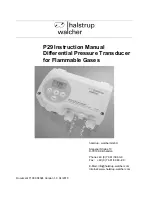
20
5
BATTERY CHARGING
■
Caution
• Misuse of Li-ion batteries may result in the following haz-
ards: smoke, fire, or the battery may rupture. Misuse can
also cause damage to the battery or degradation of battery
performance.
• Prior to using the battery pack for the first time, or after not
using it for a long time, you must fully charge the pack. Oth-
erwise, the transceiver may not turn ON.
D
Battery caution
R
DANGER! DO NOT
hammer or otherwise impact the battery. Do
not use the battery if it has been severely impacted or dropped, or if
the battery has been subjected to heavy pressure. Battery damage
may not be visible on the outside of the case. Even if the surface
of the battery does not show cracks or any other damage, the cells
inside the battery may rupture or catch fire.
R
DANGER! NEVER
use or leave battery packs in areas with
temperatures above +60˚C (+140˚F). High temperature buildup in
the battery, such as could occur near fires or stoves, inside a sun
heated car, or in direct sunlight may cause the battery to rupture or
catch fire. Excessive temperatures may also degrade battery per-
formance or shorten battery life.
R
DANGER! DO NOT
expose the battery to rain, snow, seawater,
or any other liquids. Do not charge or use a wet battery. If the bat-
tery gets wet, be sure to wipe it dry before using. The battery is not
waterproof.
R
DANGER!
KEEP
battery packs away from fire. Fire or heat may
cause them to rupture or explode. Dispose of used battery packs in
accordance with local regulations.
R
DANGER! NEVER
solder the battery terminals or NEVER mod-
ify the battery pack. This may cause heat generation, and the bat-
tery may burst, emit smoke or catch fire.
















































